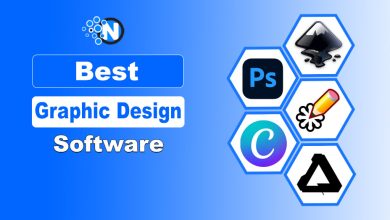Contractor Management System 101: Successful Implementation Guide

Did you know that 20% of small businesses fail within their first year? Is your small business struggling with efficiency too? It’s smart to create systems that bring efficiency to your business management.
Employees need structure and prioritization tools to achieve their greatest potential on the job. Once you install systems, your company can foster a good work environment that attracts and retains talent.
Ready to roll out a strategy? We want to help you. Here’s a guide to creating a successful contractor management system in your company.
Setting Clear Objectives
Successful implementation begins with clear objectives. Before adopting a CMS, define your goals and expectations.
- Identify Pain Points: Assess your current contractor management process to identify pain points, bottlenecks, and areas that need improvement.
- Set Specific Goals: Define what you want to achieve with a CMS, whether it’s reducing accidents, improving efficiency, or enhancing cost control.
- Allocate Resources: Determine the resources, budget, and personnel required for the implementation process.
Identifying the Right System
Choosing the right system is the first critical step toward successful implementation. Identify the right one for your company’s specific needs. This involves:
- Thoroughly researching available systems
- Determining your company’s current and future requirements
- Consulting with all relevant stakeholders
It is essential to consider factors such as cost and ease of use. Also, consider scalability when selecting a system. Once the right system has been properly identified, it is crucial to create a detailed implementation plan.
If you need help identifying the right system for your company, you can ask for info on contractor management services for more details. Implementing a new system in your company can be daunting, but with the help of contractor management services, it can be done successfully.
Planning the Implementation
A well-thought-out implementation plan is key to a successful CMS adoption.
- Timeline: Establish a realistic timeline for the implementation process, taking into account all necessary steps, from system setup to employee training.
- Data Migration: Ensure a smooth transition by migrating existing contractor data into the new system.
- Training: Train employees, contractors, and relevant stakeholders on how to use the CMS effectively.
- Testing: Conduct thorough testing to identify and resolve any issues before full deployment.

Involving Stakeholders Early
This process should begin with clear communication and transparency. It ensures that all stakeholders are aware of the planned system and its potential impact on the company.
This will help to mitigate any resistance or pushback from stakeholders in the later stages of implementation. It is also important to involve different levels of stakeholders. It should be from executives to frontline employees, as their perspectives and insights can provide valuable input for the system design.
Integration with Company Processes
For a CMS to be effective, it must seamlessly integrate with your company’s processes.
- Customization: Tailor the CMS to align with your existing workflows and processes.
- Data Synchronization: Ensure that data flows smoothly between the CMS and your other systems for real-time monitoring.
- Reporting and Analytics: Implement reporting and analytics features to gain insights into contractor performance and compliance.
Training and Support
All users must complete a rigorous and organized training program to operate the system efficiently. This training needs to be customized for various user groups. This includes onboarding overseas contractors.
Also, ongoing support services should be available to address any issues or queries that arise. This helps to maintain system adoption for all users. This is essential to avoid any setbacks caused by user frustration.
Data Management
Good data management practices are crucial for the successful operation of a global contractor management system. This includes:
- Accurate data entry
- Regular updates
- Routine system checks
These are essential to ensuring data accuracy. Effective data management is key to gaining the most value out of the system. It also drives informed decision-making. Furthermore, it plays a vital role in ensuring compliance with regulatory requirements.
Compliance and Data Security
Compliance and data security are paramount in contractor management.
- Data Protection: Implement robust data security measures to protect sensitive contractor information.
- Compliance Monitoring: Use the CMS to track contractor compliance with safety, regulatory, and quality standards.
- Audit Trails: Maintain detailed audit trails to ensure transparency and accountability.
Continuous Improvement
Implementing a contractor management system should not be a one-off process. It should be viewed as a continuous journey of improvement. The system remains effective and beneficial in the long run by:
- Regularly reviewing the system’s performance
- Soliciting feedback from users
- Making necessary adjustments
This approach also allows for the incorporation of new features and updates to keep up with the ever-evolving construction industry.
Have a Successful Contractor Management System Today
A well-implemented contractor management system can bring about many benefits for construction businesses. By following these steps, companies can ensure the successful adoption and utilization of such systems. It will lead to increased efficiency, compliance, and overall success in their projects.
So why wait? Start exploring your options today. Take a step towards transforming your construction business for the better.




